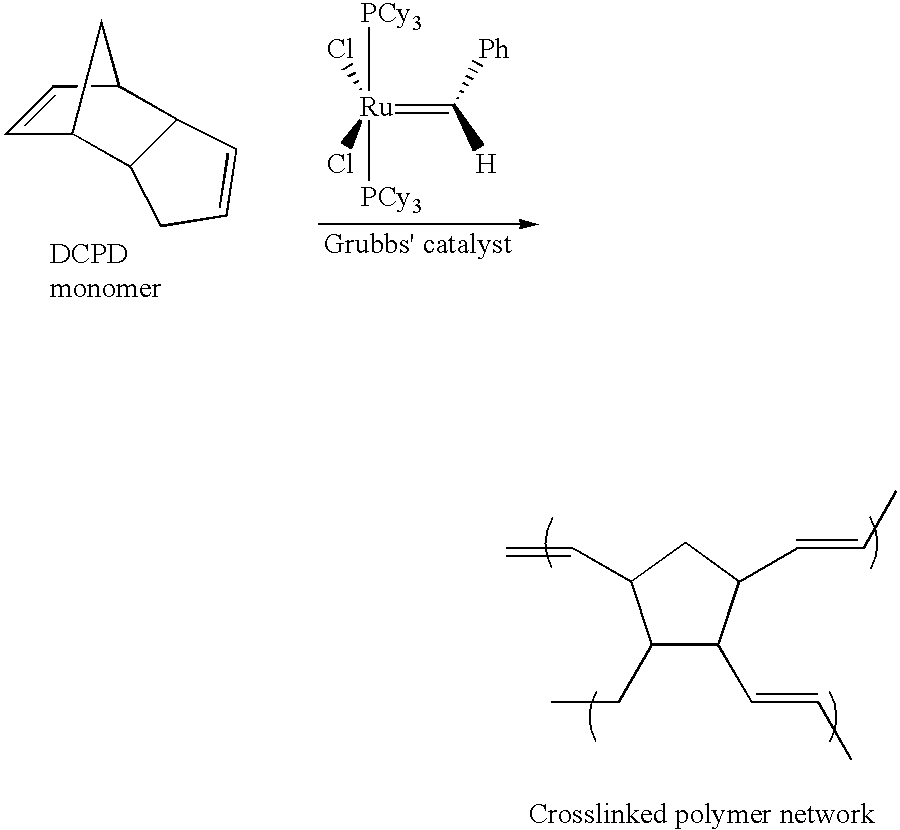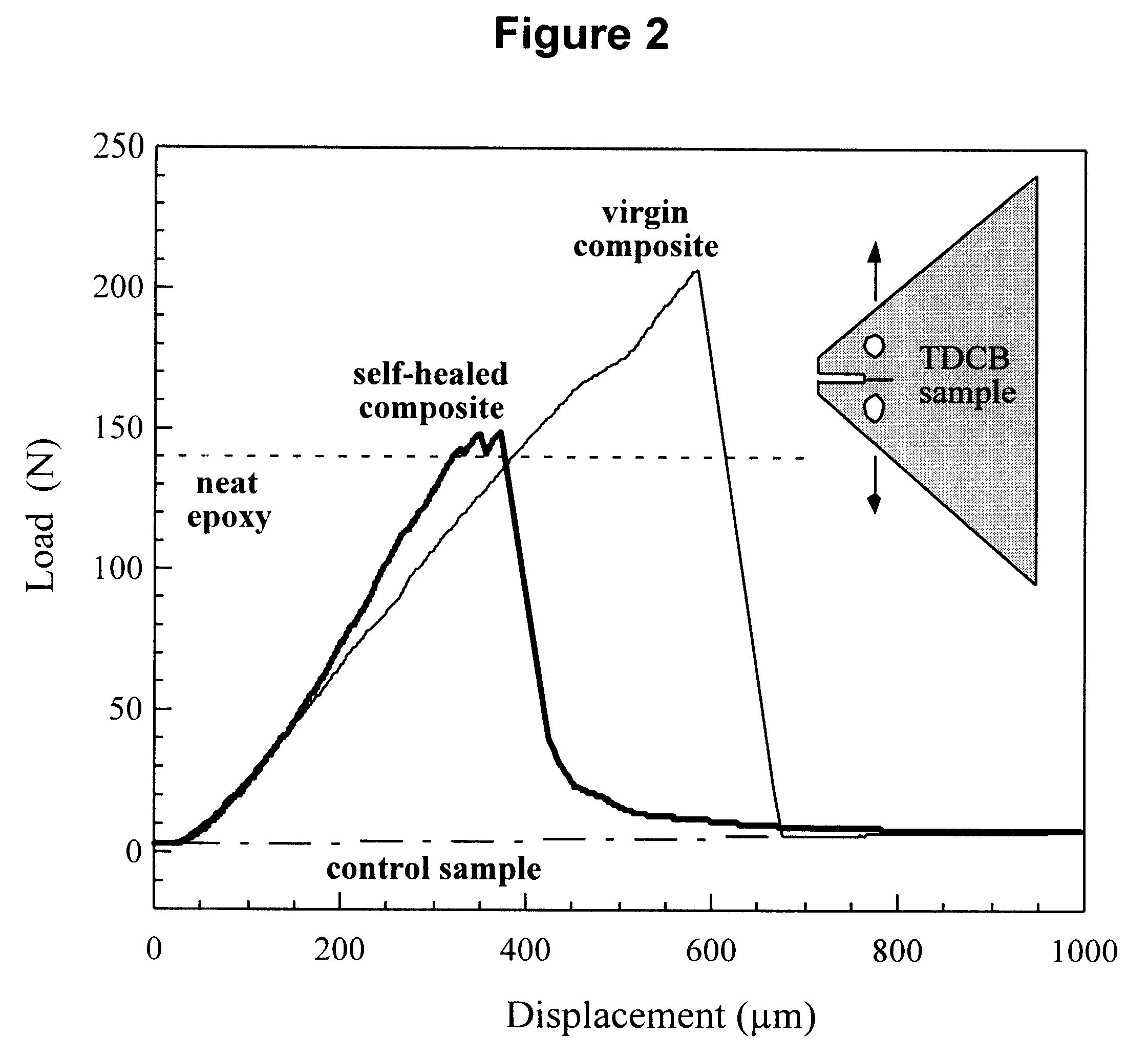Multifunctional autonomically healing composite material
a composite material, multi-functional technology, applied in the field of composite materials, can solve the problems of thermal setting polymers affecting the adhesion of the composite material, etc., and achieve the effect of increasing the adhesion
- Summary
- Abstract
- Description
- Claims
- Application Information
AI Technical Summary
Benefits of technology
Problems solved by technology
Method used
Image
Examples
example
DCPD filled capsules (50-200 .mu.m average diameter) with a urea-formaldehyde shell were prepared using standard microencapsulation techniques. The capsule shell provides a protective barrier between the catalyst and DCPD to prevent polymerization during the preparation of the composite. ##STR1##
The reaction scheme for the polymerization of DCPD is shown below
To assess the crack healing efficiency of these composite materials, fracture tests were performed using a tapered double-cantilever beam (TDCB) specimen (FIG. 2). Self-healing composite and control samples were fabricated. Control samples consisted of: (1) neat epoxy containing no Grubbs' catalyst or capsules, (2) epoxy with Grubbs' catalyst but no capsules and (3) epoxy with capsules but no catalyst. A sharp pre-crack was created in the tapered samples by gently tapping a razor blade into a molded starter notch. Load was applied in a direction perpendicular to the pre-crack (Mode I) with pin loading grips as shown in FIG. 2. ...
PUM
| Property | Measurement | Unit |
|---|---|---|
| diameter | aaaaa | aaaaa |
| diameter | aaaaa | aaaaa |
| thickness | aaaaa | aaaaa |
Abstract
Description
Claims
Application Information
 Login to View More
Login to View More - R&D
- Intellectual Property
- Life Sciences
- Materials
- Tech Scout
- Unparalleled Data Quality
- Higher Quality Content
- 60% Fewer Hallucinations
Browse by: Latest US Patents, China's latest patents, Technical Efficacy Thesaurus, Application Domain, Technology Topic, Popular Technical Reports.
© 2025 PatSnap. All rights reserved.Legal|Privacy policy|Modern Slavery Act Transparency Statement|Sitemap|About US| Contact US: help@patsnap.com



